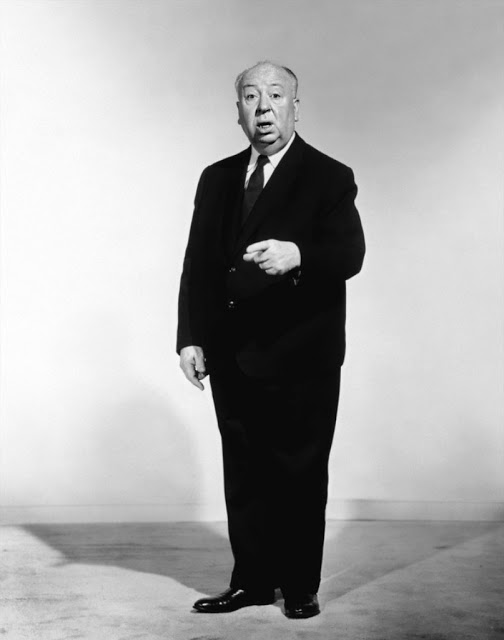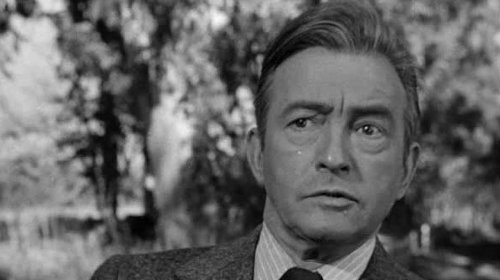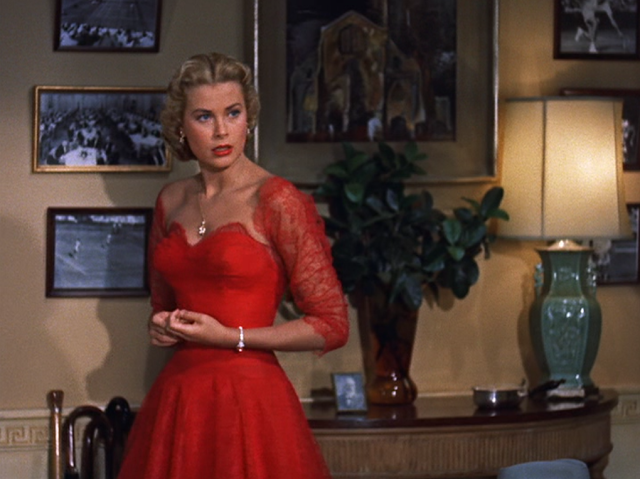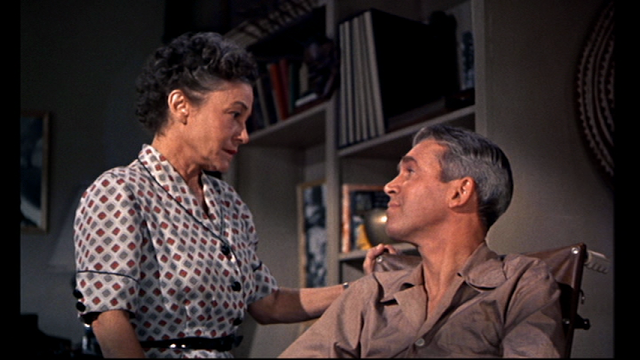Alfred Hitchcock made A LOT of movies.
We’ve heard of many of them, we’ve seen a few of them, but when it comes to really nailing things down – really describing what makes Hitchcock so great – we tend to balk because of the sheer volume that lies before us.
This is understandable. Most Hitchcock films benefit from being compared with each other; the whole is greater than the sum of the parts. Hitchcock worked closely with his screenwriters, composers, and set designers. With few exceptions – such as PSYCHO or THE BIRDS which could stand alone – it’s best to watch Hitchcock films in bunches, to watch for common qualities.
So where to begin?
I’ll try to make things clear and easy. Below, I’ll note 10 common qualities of Hitchcock films. Then, because Hitchcock was fond of the number 13, I’ll recommend 13 films to watch.
Let’s get this out of the way since it’s the most famous common quality to all Hitchcock films. We could dismiss the cameos as fluff, but we could still admit that it’s fun to spot Hitchcock somewhere for a moment in each film.
Some cameos are easy to spot (as in STRANGERS ON A TRAIN or NORTH BY NORTHWEST) while others (especially the 1930s cameos) are much tougher. Most cameos come within the first 30 minutes of the films. A few films have two cameos!
2. TRANSFERRENCE OF GUILT.
Many Hitchcock protagonists are wrongly accused, often chased and hounded for crimes they did not commit. But these same protagonists are usually guilty of a lesser crime, something dishonest or fraudulent, something unsavory in their pasts. Because guilt is so prevalent in the films, some historians view Hitchcock as a Catholic moralist.
The flipside of featuring good guys who are not totally good is featuring bad guys who are not totally bad; many Hitchcock villains are charming (like Claude Rains in NOTORIOUS), and some seem sad or unlucky rather than evil (like Oskar Homolka in SABOTAGE).
3. MACGUFFINS
By “MacGuffin,” Hitchcock described some goal – some object or weapon or knowledge – sought by the villains, and perhaps the heroes, of the stories. It’s usually unspecified, but we can tell that it’s important. It becomes the reason for the plot. MacGuffins became less important in the Hollywood films, but they help describe the 1930s thrillers quite well.
In just a few films (such as THE 39 STEPS, NOTORIOUS, or TORN CURTAIN) the MacGuffin is identified and explained. Why are MacGuffins usually unspecified? Because Hitchcock is more concerned with the drama, the emotions of the characters.
4. SUSPENSE RATHER THAN MYSTERY.
Hitchcock is the master of the suspense or thriller film. These are films where the audience is given some information about something bad – like a ticking bomb, a murderer waiting in the shadows, or a poisoned cup of milk – but the denouement is suspended, which raises the tension.
Mystery films, by contrast, withhold information so as to surprise us at the conclusions. While some Hitchcock stories are akin to mysteries (like THE LADY VANISHES), most of them only retain mystery elements for the first 30 minutes and then turn into suspense films thereafter.
5. AN ABERRANT WOMAN
This usually means a sexually adventurous woman, perhaps the heroine, or perhaps the heroine’s foil. This theme goes back at least to BLACKMAIL (1929). Sometimes the aberrant woman is not-so-subtly punished, as in REBECCA. At other times, the aberrant woman triumphs, as in NOTORIOUS or DIAL M FOR MURDER. Most women are blondes. Several times while making films, Hitch became obsessed with his blonde lead actresses.
6. SILLY OLD LADIES
For every cool young lady in a Hitchcock film, you’ll find a silly old one. Mothers in particular tend to be foolish and annoying. Sometimes they are funny, like in NORTH BY NORTHWEST, and sometimes they are oblivious, like in SHADOW OF A DOUBT, but usually they are simply ridiculous, as in STAGE FRIGHT. The few likeable old women include Mrs. Froy from LADY VANISHES, Stella the nurse from REAR WINDOW, and (briefly) the ornithologist from THE BIRDS.
7. USELESS POLICE
Police departments range from understandably misled, as in I CONFESS or FRENZY, to wholly incompetent, as in YOUNG AND INNOCENT. In climactic action scenes, they usually arrive too late to even help the protagonists help themselves. In just a few films, most notably DIAL M FOR MURDER, are police officers competent and likeable. Hitchcock himself was placed in jail for five minutes as a punishment when he was five years old, and the resulting fear and mistrust of police lasted a lifetime.
8. SLOW STARTS
A few films, such as LIFEBOAT or ROPE or VERTIGO, have striking openings. But most Hitchcock films run at least 20 minutes before a standout action scene. The 1956 version of MAN WHO KNEW TOO MUCH takes a full 30 minutes to really grab you. TORN CURTAIN waits 45 minutes before any action. But these slow beginnings were part of Hitchcock’s directorial strategy: establishing a realistic setting and letting us observe little oddities or quirks in the characters or locations that might become important later on.
9. CREATIVE CAMERAWORK
Hitchcock always knew where to put the camera for maximum effect. He also knew how to keep the camera from taking over – how to keep the films from becoming overly stylized. A few shots jump out at you – like the giant tracking shot that leads to the drummer in YOUNG AND INNOCENT or the “Ferris Wheel” shot of Henry Fonda from THE WRONG MAN or the dolly zoom in VERTIGO – but most shots avoid calling attention to themselves as they give you the best possible view of the action.
10. HUMOR
There’s always something funny in a Hitchcock film, and it could be a comic image like the cigarette in the cream in REBECCA, a comic situation like the note cards at the Peace Party lecture in FOREIGN CORRESPONDENT, or comic dialogue like in STAGE FRIGHT. Even the weird VERTIGO gets darkly funny when the coroner insults the hapless Jimmy Stewart. Hitchcock himself was famous for cracking dirty jokes on the set. Perhaps only THE WRONG MAN is completely devoid of humor. When juxtaposed with tension, humor causes tension to increase.
WHAT TO WATCH
First, I advise skipping the earliest films, at least for now. One day, you can watch THE LODGER and BLACKMAIL. I suggest starting with the best of the early British thrillers, the films that basically defined “thriller” for the cinema. I’ll recommend four:
1. THE 39 STEPS (1935)
Here’s where you get the archetype of the Man on the Run, one of Hitchcock’s favorite plots.
2. SABOTAGE (1936)
Watch for a startling plot development at about the halfway mark. Hitchcock felt this plot incident was his biggest blunder, but many viewers – including myself – think it a brilliant surprise.
3. YOUNG AND INNOCENT (a.k.a. “The Girl Was Young,” 1937)
A friend of mine who is a Hitchcock fanatic calls this “I Was a Teenage 39 Steps.” The young hero and heroine are lovable, and there’s a lot of action, especially in the second half. I think it’s the master’s most underrated picture.
4. THE LADY VANISHES (1938)
This may be Hitchcock’s first perfect construct, a film that slides seamlessly and effortlessly from one scene into the next. As others have said before me, the lively yet steady pacing is akin to the train ride itself.
Now that you’ve watched several early thrillers, it’s time for the Hollywood films. So many of these films are great that it’s hard to select just a few. But here are eight to get you going:
1. REBECCA (1940)
Less of a thriller and more of a Gothic drama, Hitchcock’s first Hollywood production features a heroine who is never named; the titular “Rebecca” is her husband’s deceased first wife. Despite remaining nameless, Joan Fontaine’s heroine transforms almost imperceptively from a naive youth to a contemplative matron. Laurence Olivier makes the flawed husband equally annoying and charming.
2. SHADOW OF A DOUBT (1943)
Though not Hitchcock’s first Hollywood production, it is considered Hitchcock’s first American film because it is his first set in America. It was Hitchcock’s favorite of his own films because, as he put it, it brings menace into a small town. Enjoy the two supporting characters who like to joke about plotting murders.
3. STRANGERS ON A TRAIN (1951)
Lots of action here, and a plot that piles one complication on top of another. The villain is weird and unpredictable, and he seems much smarter than our young hero. This film is easy to like, so you might wish to watch it before the more understated SHADOW or REBECCA.
4. DIAL M FOR MURDER (1954)
Like its predecessor ROPE, this is a filmed play. But it’s filmed so precisely that you’d never know it. Ray Milland plays the most likeable of all Hitchcock’s villains, devising a flawless (or is it?) plan to dispatch his unfaithful wife.
5. REAR WINDOW (1954)
This one is my (and many other people’s) favorite. The story and setting are highly unusual. The restored Technicolor prints are gorgeous. It has some of the most prominent – not to mention the most humorous – sexual symbolism. It’s a highly visual film that even takes “seeing” as its theme. When people call Hitchcock “voyeuristic” they usually mean that the camera moves as the viewer’s eyes would move. Historically, REAR WINDOW is notable for having one of the first jazz scores.
6. NORTH BY NORTHWEST (1959)
For hardcore Hitchcock thrillers, this is tops. It’s also very funny. It’s a long movie, so you might wish to watch it in episodes, like a classic serial. It might be Hitch’s best trailer too.
7. PSYCHO (1960)
So influential has this film been, that it’s difficult to watch it objectively (without recognizing the twists in the story and the imagery). But in the context of Hitchcock’s career, it’s still shocking. It feels very different, much more strange and disturbing, than the films that came before it. Hitchcock originally wanted the shower scene to be silent, but composer Bernard Herrmann prompted him to use the “slicing strings” music. I’ve written more on PSYCHO and on THE BIRDS in my Claws & Saucers film guidebook.
8. THE BIRDS (1963)
Like PSYCHO, this is recognizably a horror picture rather than a thriller. But unlike PSYCHO, it’s quickly recognizable as a Hitchcock picture. It can stand alone like PSYCHO, but it benefits from comparison to earlier pictures like NOTORIOUS or TO CATCH A THIEF in that we witness a romance that grows stronger even as surrounding circumstances grow increasingly dire.
Now that you’ve watched eight Hollywood Hitchcocks, you can watch one more: VERTIGO (1958). I suggest saving this one for last because it requires an educated viewer for full effect. Think of it as an art film rather than a thriller. It’s almost surreal. Bernard Herrmann’s score is essential to the slow simmering mood of dread. Plot elements and stylistic elements have been imitated many times (e.g. the silent stalking sequence imitated expertly by Brian De Palma in DRESSED TO KILL).
Everything seems symbolic, perhaps allegorical.
FURTHER READING
As noted above, because the sheer volume of films is hard to handle, very few basic articles on Hitchcock can be found online. Most articles assume you know your stuff already. The Wikipedia page might be the best one out there. But here are three sites I found useful:
1. A blog post with a few general remarks and a list of 10 recommended films.
2. An introduction to early Hitchcock, with a few remarks about recurring themes.
3. A look at Hitchcock’s cinematography, aimed at aspiring filmmakers but with general appeal.
















































































































